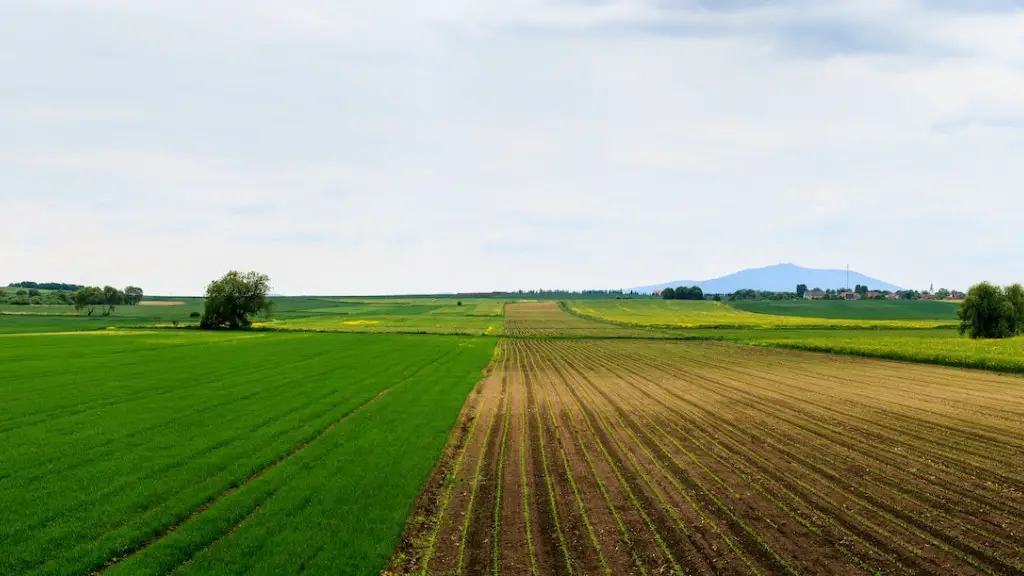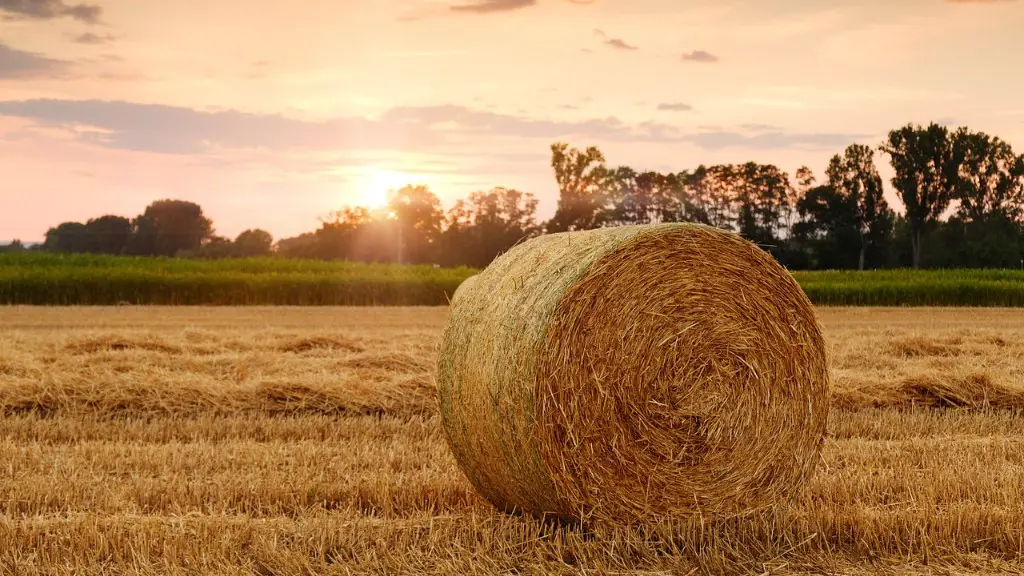The boom in southern agriculture was caused by many factors, including an increase in demand for agricultural products, new technology that made farming more efficient, and an influx of new farmers to the region.
In the early 1800s, the population of the southern United States was growing rapidly. At the same time, the region was experiencing an economic boom. This led to a demand for new farmland. The fertile soils of the South were perfect for agriculture, and the climate was ideal for crops such as cotton and tobacco. These factors led to a boom in southern agriculture.
What crop dominated Southern agriculture?
The cotton gin was a game-changer for the American economy. After its invention in 1793, cotton quickly became the dominant cash crop in the South, making up more than half of all US exports. The cotton gin made it much easier and faster to process cotton, and this new found abundance helped fuel the Industrial Revolution. Today, cotton is still one of the most important crops in the world, and the cotton gin remains an essential part of the cotton industry.
The growth of plantations and agriculture in the Southern United States led to an increase in the demand for enslaved Africans. This, in turn, led to an increase in the number of enslaved Africans brought to North America. The slave trade grew to meet this demand, resulting in more Africans being enslaved and brought to the Americas.
What 3 crops dominated Southern agriculture before the American Revolution
The American Revolution led to a drop in prices for tobacco, rice, and indigo, which were the three main crops grown in the south. This had a major impact on the southern economy and culture, as most of these crops were produced by enslaved African Americans.
The Second Middle Passage was a forced migration of slaves from the Upper South to the Deep South, where they were sold off in droves to meet the increased demand for cotton. This was the second largest forced migration in America’s history, and it had a devastating impact on the slaves involved.
What invention most affected southern agriculture?
Eli Whitney’s cotton gin was a game-changer for the cotton industry. By greatly speeding up the process of removing seeds from cotton fiber, it made production much more efficient. Whitney’s cotton gin also made it possible for cotton to become a successful cash crop in the southern US.
The plantation farms in the southern colonies were established for cash crops like rice, tobacco and sugar cane. These crops required increasing amounts of labor, which was provided by the property owners. The climate and land in the area were ideal for these crops, and the property owners were able to make a lot of money from them.
Why did slavery grow rapidly in the South?
Because the climate and soil of the South were suitable for the cultivation of commercial (plantation) crops such as tobacco, rice, and indigo, slavery developed in the southern colonies on a much larger scale than in the northern colonies; the latter’s labor needs were met primarily through the use of European indentured servants. slavery was an essential part of the southern colonies’ economy and way of life, while the northern colonies had a more diverse economy and a more mixed approach to labor.
After the Civil War, many former slaves became sharecroppers or tenant farmers. This was a system in which white landlords would enter into contracts with impoverished farm laborers to work their lands. Sharecropping and tenant farming were not as beneficial to the workers as slavery had been, and many former slaves ended up in poverty.
How did the economy of the southern colonies contribute to the growth of slavery
The depletion of cotton land due to soil erosion and exhaustion led to a shortage of the commodity, driving up the price of land and slaves. This made it difficult for smaller farmers to compete, and they were pushed out of newer cotton-growing areas as bigger planters consolidate their holdings.
The southern colonies were made up mostly of coastal plains and piedmont areas. The soil was good for farming and the climate was warm, including hot summers and mild winters. The growing season here was longer than any other region. The southern colonies’ economy was based on agriculture (farming).
What were 3 causes of the Agricultural Revolution?
What were the contributing factors to the Agricultural Revolution? The Agricultural Revolution was a time when farming methods improved, resulting in increased crop yield. The main contributing factors were the increased availability of farmland, a favorable climate, more livestock, and improved crop yield. With more land available for farming, farmers could experiment with new methods and crop rotation. The favorable climate allowed for longer growing seasons and more predictable weather patterns. More livestock meant more manure for fertilizer, and improved crop yield made it possible to support a larger population.
The Agricultural Revolution saw a huge increase in agricultural productivity thanks to the invention and advancement of new tools and machines. The plough, seed drill and threshing machine were all vital in making farming more efficient and easier. This allowed farmers to produce more food which helped to feed the growing population.
What caused the cotton boom
The cotton gin is a machine that was invented in the late 18th century to remove the seeds from cotton plants. This invention led to a dramatic increase in cotton production and demand, as well as increased dependence on slavery to support the cotton industry. Cotton was one of the most important crops in the United States by the early 19th century, and the Cotton Boom of the early 1800s led to a large increase in the number of slaves being bought and sold. Although slavery was eventually abolished, the cotton gin continues to be used to this day, making it one of the most influential inventions in American history.
The cotton boom was the main factor in the increased demand for enslaved labor. The number of enslaved people in America grew from 700,000 in 1790 to 4,000,000 in 1860 because the value of cotton increased. This meant that people who owned enslaved people could make more money off of them.
What started the cotton boom?
Cotton was one of the main crops grown by enslaved people in the United States. After the War of 1812, there was a huge increase in cotton production in the United States. This happened along with a textile boom in the Northeastern US. By 1850, 18 million of the nation’s 32 million enslaved people were growing and picking cotton.
Today marks the anniversary of one of the most important inventions in American history: the cotton gin. Developed by Eli Whitney in 1794, this device revolutionized the cotton industry and had a profound impact on the social and economic conditions in the United States. The cotton gin made it possible to mass-produce cotton, which in turn led to the growth of the American economy and the rise of the Southern slave-based economy. The cotton gin also played a significant role in the build-up to the Civil War, as the fight over its patent became a major point of contention between the North and South. Today, the cotton gin stands as a reminder of the power of invention and the impact it can have on the world.
What inventions changed farming in the South
1. The reaper is a machine that was invented to harvest small grains. It is a very efficient machine that can harvest large areas of grain in a short amount of time.
2. The thresher is a machine that was invented to remove kernels from the straw. It is a very efficient machine that can thresh large areas of grain in a short amount of time.
3. The steam engine is a machine that was invented to power the thresher. It is a very efficient machine that can power the thresher in a short amount of time.
4. The combine is a machine that was invented to harvest and thresh grain. It is a very efficient machine that can harvest and thresh large areas of grain in a short amount of time.
5. The automobile is a machine that was invented to transport the grain. It is a very efficient machine that can transport large amounts of grain in a short amount of time.
6. The tractor is a machine that was invented to power the combine. It is a very efficient machine that can power the combine in a short amount of time.
7. The hydraulics is a machine that was invented to power the automobile. It is a very
The crops mentioned in the prompt are all indigenous to the United States and were first cultivated by Native Americans. Later, colonists in the southern states began to grow these crops as well. These crops continue to be important food and fiber crops in the United States today.
Conclusion
The main factor that caused a boom in southern agriculture was the invention of the cotton gin by Eli Whitney in 1793. This invention made it possible to quickly and easily remove the seeds from cotton, which made growing and processing cotton much more efficient. This led to a dramatic increase in the production of cotton, which was a major crop in the South. The increase in cotton production helped to spur economic growth in the region and made the South a major player in the national and international economies.
There are a variety of reasons that can be cited for why southern agriculture boomed during the early to mid-20th century. New technologies and mechanization allowed for greater efficiency and productivity, while the invention of synthetic fertilizers and pesticides helped to boost yields. The expansion of the railroads made it easier to transport goods to markets, and the establishment of the Tennessee Valley Authority brought electricity and irrigation to the region. Finally, the implementation of federal programs like the New Deal and the Agricultural Adjustment Act provided financial assistance to farmers and helped to stabilize the agricultural industry. All of these factors combined to create a perfect storm that led to a boom in southern agriculture.





